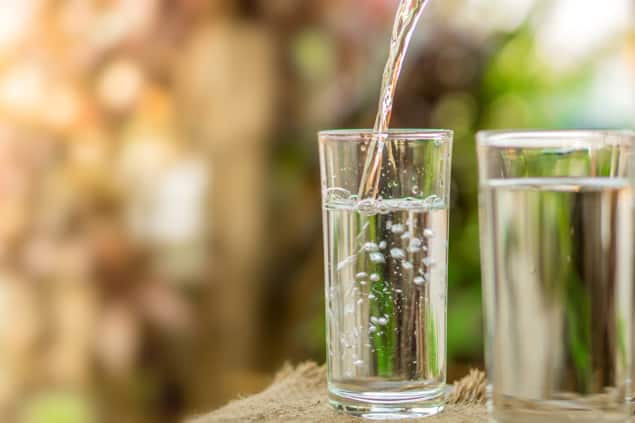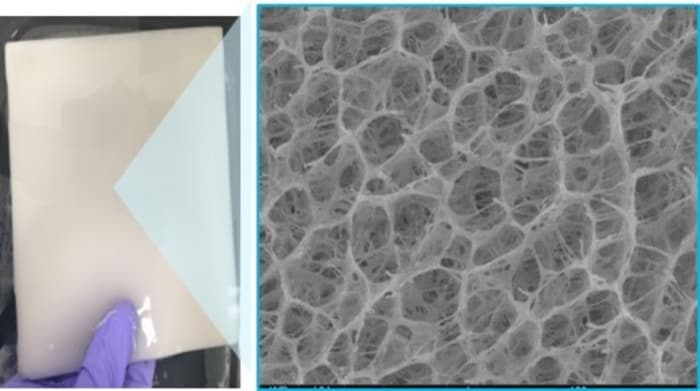
Researchers have developed a sunlight-powered hydrogel with a loofah-like structure that can rapidly purify large quantities of water contaminated with oils, metals and microplastics. The material, which functions even when it is cloudy, could supply enough drinking-quality water to meet a person’s daily requirements.
Hydrogels show much promise for applications like water purification, but current techniques cannot generate sufficient quantities of water because of the closed-pore structures of the materials studied so far. In contrast, natural loofahs, which many people use to exfoliate the skin, have large, open and interconnected pores. Water can thus filter at a significantly accelerated rate through these structures.
In the new work, a team of researchers led by Rodney Priestley and Xiaohui Xu from Princeton University fabricated a loofah-like solar absorber gel (LSAG) with an interconnected open-pore structure. The gel can produce drinking-quality water from various contaminated sources at a rate of around 26 kg/m2/h, which is high enough, they say, to meet the daily water needs of a person.
The researchers made their LSAG from poly(N-isopropylacrylamide) (PNIPAm), polydopamine (PDA) and poly(sulfobetaine methacrylate) (PSBMA) using an ethylene glycol-water solvent.
“We developed the loofah-inspired PNIPAm hydrogel by free radical polymerization using the mixed solvent as the polymerization medium,” explains Xu. “We then functionalized the PNIPAm with PDA and PSBMA via an in situ polymerization approach, yielding a multifunctional and highly durable solar absorber material to purify water.”

From hydrophilic to hydrophobic
The researchers tested their loofah-like solar gel by immersing it in a solution of contaminated water at less than its lower critical solution temperature (LCST), the temperature below which the gel is hydrophilic. They observed that the gel swelled by absorbing large amounts of the water while simultaneously capturing contaminates.
They then exposed the gel to simulated sunlight of between 0.5 and 1 kW/m2 (0.5–1 sun), raising its temperature above its LCST. This causes the gel to switch from a hydrophilic state to a hydrophobic one, thereby allowing the purified water to be rapidly released, says Xu. Indeed, the gel released roughly 70% of the stored liquid in just 10–20 min.

Solar-powered water purifier is inspired by pufferfish
According to the researchers, who report their work in ACS Central Science, the new solar absorber gel could open a “new paradigm for solar water production with the potential to meet daily human demand”.
The team is now working on developing an antibacterial hydrogel that can efficiently kill water-born bacteria. “We will also be testing our gel’s ability to purify water contaminated with PFAS [per- and polyfluoroalkyl substances],” Xu tells Physics World.



